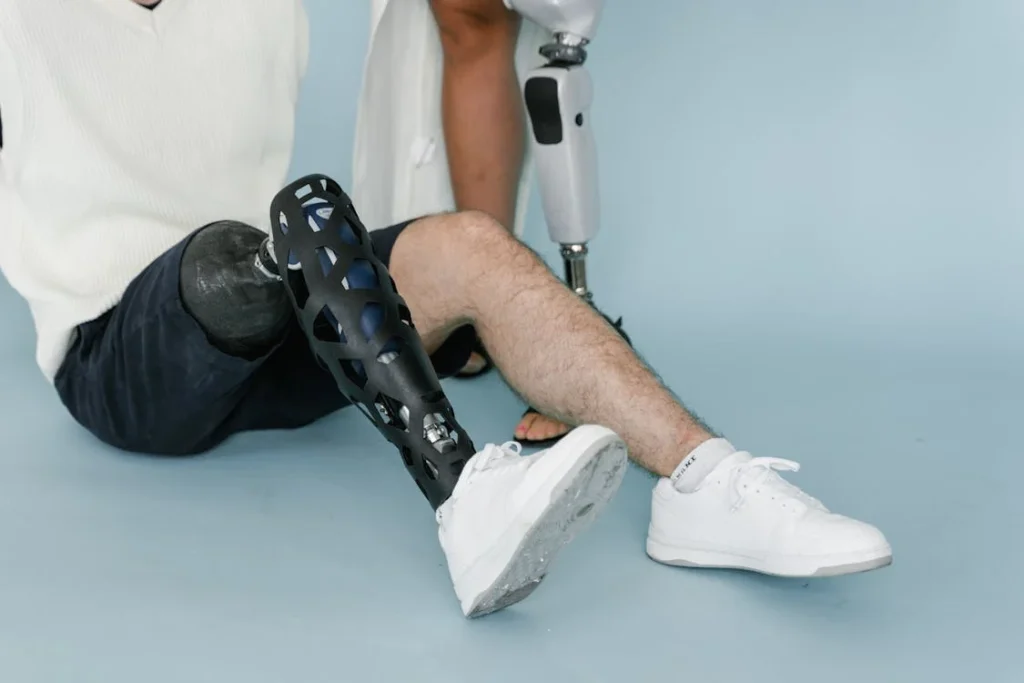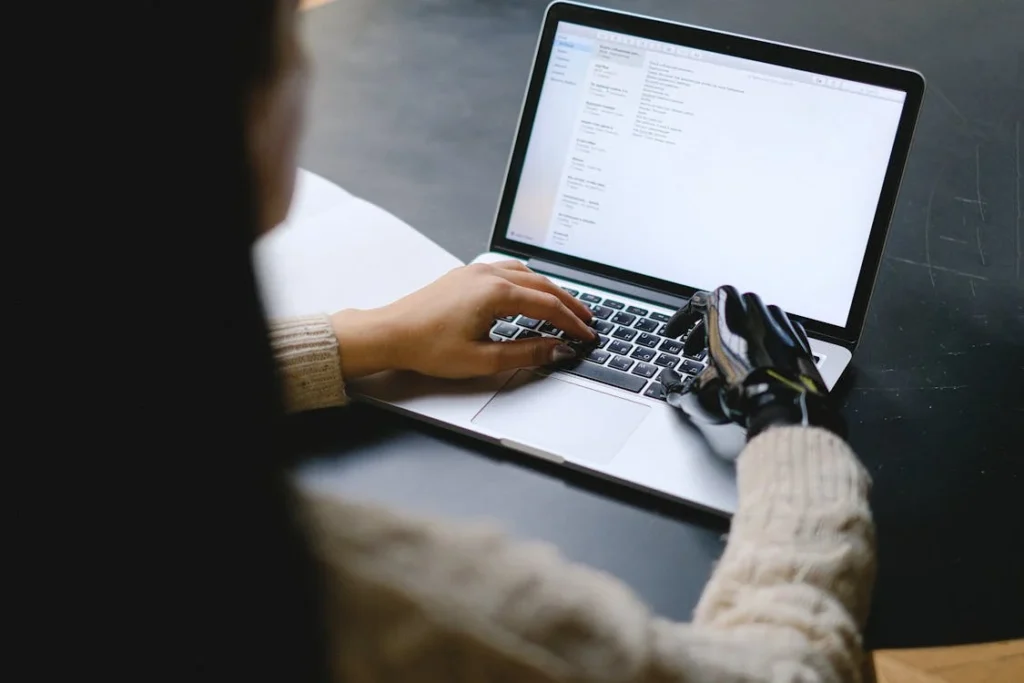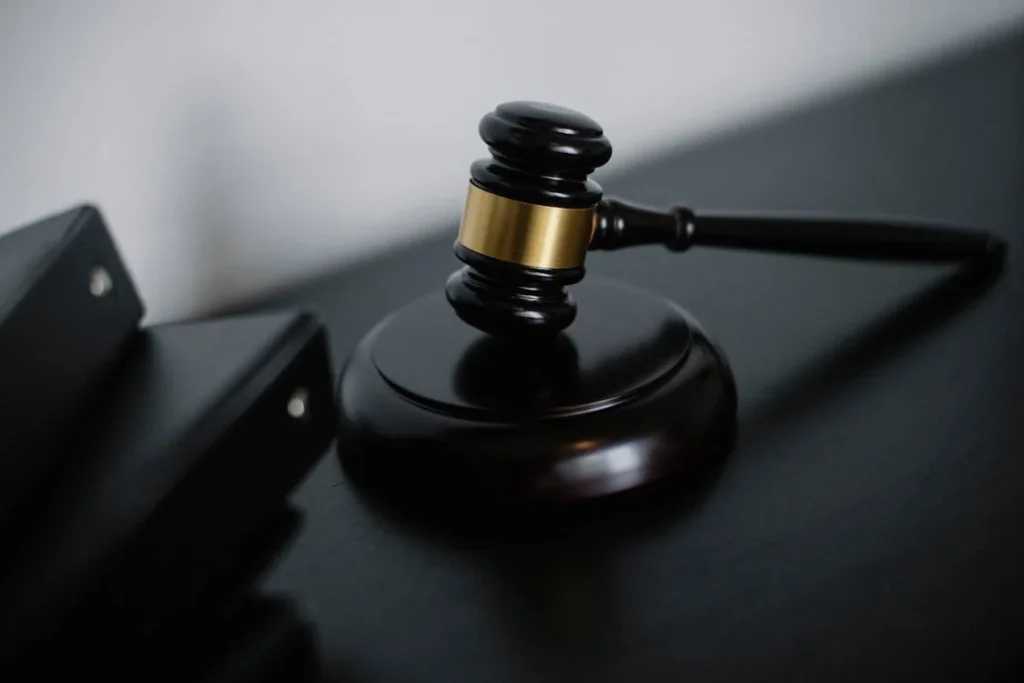Accessibility should be a fundamental right for all, yet it remains a challenge in many parts of the world. While laws and policies play a crucial role in making spaces and services more inclusive, cultural attitudes and traditions often have an even greater influence. In some societies, accessibility is widely embraced, and efforts are made to ensure that people with disabilities can fully participate in daily life. In others, stigma, misconceptions, and deeply rooted beliefs create barriers that limit opportunities for disabled individuals.
Understanding why accessibility varies across cultures requires looking beyond infrastructure and regulations. Social attitudes, historical influences, economic factors, and religious beliefs all shape how different communities approach inclusion. In some regions, disability is seen as a natural part of life, while in others, it is still viewed as a burden or a source of shame. These cultural perspectives affect everything from workplace inclusion to the availability of assistive technology like prosthetics.

The Role of Cultural Perceptions in Accessibility
The way societies view disability plays a major role in determining how accessible their environments are. Cultural beliefs, traditions, and historical influences shape attitudes toward people with disabilities, influencing whether inclusion is seen as a priority or an afterthought.
In some cultures, accessibility is embraced as a basic human right, while in others, disability is still misunderstood, leading to exclusion and neglect.
Disability as a Stigma vs. Disability as Normal
One of the biggest cultural barriers to accessibility is the stigma attached to disability. In many societies, disability is seen as something unfortunate or shameful, leading to social isolation.
Families may hide or avoid speaking about disabled relatives due to fear of judgment. In such cultures, accessibility is often not prioritized because there is little public pressure to accommodate people with disabilities.
In contrast, some cultures view disability as a natural part of life and ensure that society adapts to include everyone. In Scandinavian countries, for example, accessibility is deeply ingrained in urban planning, education, and employment policies.
People with disabilities are not seen as separate from the rest of society but as individuals with equal rights and opportunities.
This perspective encourages governments and businesses to actively remove barriers, making public spaces, transportation, and workplaces inclusive.
Historical Influences on Disability Inclusion
Cultural attitudes toward disability are often shaped by history. In societies with a strong tradition of collectivism, where the well-being of the group is valued over individual needs, accessibility may be overlooked unless it benefits the larger community.
In contrast, societies that have experienced strong disability rights movements, such as the United States or Canada, tend to have more developed accessibility laws and infrastructure.
Historical conflicts, wars, and revolutions have also influenced how societies approach disability. In countries that have experienced large-scale conflicts, veterans with disabilities have often driven changes in accessibility.
For example, after World War II, many Western nations improved accessibility measures due to the increasing number of injured soldiers returning home. However, in countries where disability rights have not been historically advocated for, accessibility remains a low priority.

Economic and Social Barriers to Accessibility
Beyond cultural attitudes, economic and social factors play a crucial role in determining how inclusive a society is toward people with disabilities.
Wealthier nations often have more resources to invest in accessible infrastructure, while low-income countries struggle to meet even basic accessibility needs.
However, financial limitations are only part of the issue—social priorities and government commitment also impact whether accessibility is truly implemented.
The Cost of Accessibility and Who Pays for It
Creating accessible environments requires investment. Ramps, elevators, tactile pathways, accessible transportation, and assistive technologies like prosthetics all come with costs.
In wealthier countries, governments often allocate budgets for disability inclusion, ensuring that accessibility is built into public infrastructure, workplaces, and educational institutions.
Policies such as tax incentives for businesses that provide accommodations encourage private-sector participation in accessibility efforts.
In contrast, in many developing countries, accessibility is seen as a luxury rather than a necessity. Governments facing economic challenges may prioritize issues such as poverty reduction, healthcare, or education, with disability inclusion falling lower on the agenda.
When public funds are limited, accessibility measures are often neglected, and the responsibility shifts to individuals and families, many of whom cannot afford assistive devices or specialized care.
Social Priorities and Disability Awareness
Economic development alone does not guarantee accessibility. Cultural priorities also determine how societies allocate resources and attention to disability inclusion.
In some regions, there is a strong emphasis on community support, where families take full responsibility for caring for disabled members rather than expecting government or social institutions to provide assistance.
While this approach can create close-knit support networks, it can also limit independence and access to public spaces, education, and employment.
On the other hand, societies that prioritize independence and equal opportunity tend to integrate accessibility into their legal and social frameworks.
In countries with strong disability rights movements, awareness campaigns and advocacy groups push for policy changes, ensuring that accessibility becomes a legal and social priority.
Public awareness plays a crucial role—when people recognize that disability inclusion benefits everyone, societies become more proactive in implementing accessibility measures.
Employment and Economic Participation
A significant indicator of a society’s commitment to accessibility is how it integrates people with disabilities into the workforce. In some cultures, disability is associated with dependence, leading to a lack of employment opportunities.
If workplaces are not physically accessible or if employers are hesitant to hire disabled workers due to misconceptions about productivity, people with disabilities are often excluded from economic participation. This exclusion further reinforces social stigma and financial hardship.
In progressive societies, accessibility in the workplace is legally mandated, and companies are encouraged to provide accommodations such as adaptive workstations, flexible schedules, and remote work options.
These measures not only support employees with disabilities but also contribute to economic growth by allowing more individuals to contribute to the workforce.

Education and Accessibility: How Cultural Attitudes Shape Learning Opportunities
Education is one of the most powerful tools for social and economic mobility, yet in many parts of the world, children with disabilities face significant barriers to accessing quality education.
Cultural attitudes toward disability, along with economic and infrastructural limitations, determine whether a society prioritizes inclusive education or leaves disabled students behind.
Inclusive vs. Segregated Education Systems
In some cultures, children with disabilities are fully integrated into mainstream schools, where they learn alongside their non-disabled peers.
Countries with strong disability rights movements, such as Finland, Canada, and Germany, have developed inclusive education models that ensure students with disabilities receive the necessary accommodations, including accessible classrooms, adaptive learning materials, and trained support staff.
These societies recognize that inclusive education benefits all students by promoting diversity, empathy, and equal opportunity.
In contrast, many regions still operate on a segregated education model, where disabled students are placed in separate schools or, in some cases, denied formal education altogether.
In societies where disability is stigmatized, families may feel pressure to keep children with disabilities at home rather than enrolling them in school. This exclusion limits opportunities for academic and social development, reinforcing cycles of marginalization.
The Role of Teachers and Educational Institutions
Even in countries with inclusive education policies, cultural attitudes among educators can influence how well these policies are implemented.
In some societies, teachers may lack proper training on how to accommodate students with disabilities, leading to unintentional exclusion or inadequate support.
When educators believe that disabled students are less capable of learning or require too many resources, they may discourage parents from enrolling their children in mainstream schools.
Teacher training and awareness programs play a crucial role in changing these perceptions. In societies where accessibility is prioritized, governments invest in special education training, ensuring that educators are equipped with the skills to support diverse learning needs.
Additionally, assistive technologies such as screen readers, voice recognition software, and alternative communication devices help bridge the gap, making learning more accessible for students with different abilities.
Higher Education and Career Opportunities
The barriers to accessibility extend beyond primary education. In many cultures, universities and vocational training programs are not designed to accommodate students with disabilities, limiting their opportunities for higher education and career advancement.
When universities lack accessible infrastructure, disability-friendly accommodations, or financial support for assistive technology, many students with disabilities are unable to continue their education.
Some countries, however, have implemented policies to promote accessibility in higher education.
In the United Kingdom and the United States, for example, universities are legally required to provide reasonable accommodations for disabled students, such as sign language interpreters, extended test times, and accessible dormitories.
These measures not only support disabled students but also encourage a broader cultural shift toward inclusion.

The Influence of Religion and Tradition on Accessibility
Religious and traditional beliefs often shape cultural attitudes toward disability and accessibility. While many religious teachings emphasize compassion and the importance of supporting those in need, interpretations of disability vary widely across cultures.
Some communities view disability as a divine test or a source of spiritual strength, while others associate it with karma, fate, or even past wrongdoing.
These beliefs influence how accessibility is prioritized and whether assistive technologies like prosthetics are embraced or resisted.
Disability as a Spiritual Test or Blessing
In many religious traditions, disability is seen as a test of faith, both for the individual with the disability and for the community around them.
In Christianity, Islam, and Judaism, religious teachings often emphasize that all people are created with purpose, and disability should not be seen as a punishment.
Many faith communities actively support disability inclusion, offering accessible places of worship, community support programs, and medical aid for those in need.
However, in some communities, the belief that disability is a spiritual test can sometimes lead to an overemphasis on healing rather than adaptation.
In cultures where divine intervention is seen as the ultimate solution, people with disabilities may be encouraged to seek religious cures rather than assistive technology or medical support.
While faith can be a source of comfort, it is important that religious beliefs do not discourage the use of prosthetics, rehabilitation, and accessibility measures that improve quality of life.
Karma and Disability: The Role of Reincarnation Beliefs
In Hinduism and Buddhism, the concept of karma plays a major role in shaping attitudes toward disability. Some interpretations suggest that disabilities are a result of actions in past lives, leading to mixed societal responses.
While this belief can promote acceptance—viewing disability as part of a natural cycle—it can also contribute to stigma, as some may assume that individuals with disabilities are “paying” for past actions.
These cultural perceptions impact accessibility. In communities where disability is seen as a personal fate rather than a social issue, there is often less urgency to create inclusive environments.
However, modern interpretations of karma increasingly emphasize compassion and collective responsibility, encouraging accessibility initiatives and support for prosthetic users.
Religious leaders play a key role in shifting these perspectives by promoting inclusion rather than isolation.
Places of Worship and Accessibility
Accessibility in religious spaces is a reflection of how societies value inclusion. Some places of worship have taken significant steps to accommodate disabled individuals, ensuring that religious participation is accessible to all.
Churches with wheelchair ramps, mosques with prayer areas for those who cannot kneel, and temples with sign language interpreters are examples of faith communities prioritizing inclusion.
However, in many regions, places of worship remain inaccessible due to historical architecture, lack of funding, or cultural oversight. When accessibility is not considered a priority, disabled individuals may struggle to participate fully in religious and community life.
Advocacy from within faith communities is essential in ensuring that religious institutions lead by example in promoting accessibility.

The Role of Media and Representation in Shaping Accessibility Norms
Media has a powerful influence on how societies perceive disability and accessibility. From television and film to news coverage and social media, the way disabled individuals are represented can either reinforce cultural barriers or help break them down.
While some cultures have embraced more inclusive narratives, others still struggle with outdated portrayals that contribute to exclusion and misinformation.
The Impact of Film and Television on Disability Perceptions
In many societies, the portrayal of disability in movies and television has historically been limited to two extremes: either tragic figures who need pity or extraordinary individuals who “overcome” their disabilities in inspiring ways.
While these narratives can be well-intentioned, they often fail to represent the everyday realities of people with disabilities.
For accessibility to become a priority, media must present disabled individuals as regular members of society rather than as exceptions.
Countries that have made progress in disability inclusion often have strong media representation of people with disabilities in everyday roles—working professionals, parents, students, and leaders.
When audiences see characters with prosthetics or mobility aids in non-dramatic, normalized roles, it helps shift cultural attitudes toward acceptance.
In contrast, cultures where disability is rarely seen in mainstream media often struggle with inclusion in real life. When disabled individuals are invisible in entertainment and news, it reinforces the idea that they do not belong in public life.
Addressing this gap requires more accurate and frequent representation in films, television, and digital content.
Social Media as a Tool for Accessibility Awareness
The rise of social media has played a crucial role in breaking down cultural barriers to accessibility. Unlike traditional media, where disability representation is controlled by producers and directors, social media gives disabled individuals the power to tell their own stories.
Influencers and activists with disabilities have used platforms like Instagram, TikTok, and YouTube to showcase their experiences, challenge stereotypes, and advocate for accessibility rights.
In some cultures where disability has traditionally been a taboo topic, social media has become a way for younger generations to challenge old attitudes.
Viral campaigns highlighting accessibility issues—such as inaccessible public spaces, employment discrimination, and the need for assistive technology—have led to real policy changes in some countries.
However, digital accessibility remains a challenge in itself. Many websites, apps, and online platforms are not designed with disabled users in mind, limiting their ability to participate fully.
Closed captions, screen reader compatibility, and voice-controlled interfaces are still not universally available, preventing many disabled individuals from benefiting from digital advancements.
For accessibility to be fully embraced, both online and offline spaces must be designed with inclusion in mind.
News Media and Disability Advocacy
The way disability issues are covered in the news also shapes cultural attitudes. In countries where disability rights are a major part of public discourse, news outlets frequently cover stories related to accessibility, policy changes, and technological advancements in prosthetics and assistive devices.
These reports help keep the conversation active and push governments and businesses to prioritize inclusion.
In other regions, disability issues receive little to no coverage unless tied to an extraordinary event or personal success story. This lack of visibility prevents meaningful discussions about systemic barriers and needed reforms.
Encouraging more balanced and frequent reporting on disability rights can help create a cultural shift toward greater inclusion.

Government Policies and Legal Frameworks: The Impact of Cultural Priorities
Accessibility is not just a matter of cultural attitudes—it is also shaped by the legal and policy frameworks that different governments implement.
The presence (or absence) of disability rights laws often reflects the values and priorities of a society. In countries where inclusion is deeply embedded in the cultural mindset, strong legal protections ensure that accessibility is integrated into public life.
However, in societies where disability is still viewed as an individual or family matter, legal protections may be weak or poorly enforced.
Progressive Legal Systems and Their Influence on Accessibility
Some nations have led the way in implementing comprehensive disability rights laws, creating environments where accessibility is not an afterthought but a legal requirement.
Countries such as the United States, Canada, and Germany have established strong policies that mandate accessible public transportation, inclusive education, workplace accommodations, and financial support for assistive technologies like prosthetics.
These laws have helped shape cultural attitudes, reinforcing the idea that accessibility is a fundamental human right rather than a privilege.
In these countries, businesses, schools, and public institutions are required to provide reasonable accommodations for individuals with disabilities.
Wheelchair ramps, elevators, and adaptive technologies are common, not because of social goodwill alone but because legal frameworks ensure compliance.
Strict anti-discrimination laws also protect disabled individuals from being denied employment, education, or public services due to their condition.
One of the strongest examples of such legal frameworks is the Americans with Disabilities Act (ADA) in the United States. This law mandates accessibility in all aspects of life, from workplace accommodations to public transport modifications.
Similar laws exist in the UK, where the Equality Act 2010 ensures disabled individuals have the same rights in employment, education, and public services. These policies not only provide legal protection but also help shift cultural norms toward greater inclusion.
The Gap Between Laws and Implementation
While many countries have adopted disability rights laws, enforcement remains a major challenge in several parts of the world. Having laws on paper does not always translate into real-world accessibility.
In many developing nations, disability inclusion is recognized legally but not implemented due to a lack of funding, government oversight, or social pressure to comply.
For example, India passed the Rights of Persons with Disabilities Act in 2016, which expanded protections for disabled individuals, including the right to accessible education and employment.
However, despite legal mandates, many public buildings and transportation systems remain inaccessible. The cultural shift needed to fully enforce these laws is still in progress, with advocacy groups and disability activists pushing for stronger implementation.
In some countries, corruption and bureaucracy further slow progress. Infrastructure projects meant to improve accessibility may be delayed due to misallocation of funds, and businesses may find ways to bypass accessibility laws without facing significant penalties.
This highlights the need for stronger enforcement mechanisms and greater public awareness to ensure that legal protections lead to real changes in society.
The Role of Activism and Grassroots Movements
In many parts of the world, cultural barriers to accessibility have been challenged by grassroots movements and advocacy groups. Disability rights activists play a crucial role in pushing for policy changes, increasing public awareness, and holding governments accountable.
One example of successful activism is the global movement that led to the United Nations Convention on the Rights of Persons with Disabilities (UNCRPD), an international agreement that encourages governments to uphold disability rights.
Many countries have signed and ratified this treaty, committing to improving accessibility in public life. While implementation varies, the existence of such agreements helps create international pressure to prioritize inclusion.
Local advocacy efforts have also led to major changes. In Kenya, disability rights activists successfully lobbied for improved accessibility in public transport.
In Brazil, activists have worked to make major cities like São Paulo more accessible by ensuring that new buildings comply with universal design principles.
These efforts demonstrate that cultural attitudes toward accessibility can change when there is strong advocacy and public support.
Conclusion
Cultural attitudes, economic conditions, religious beliefs, and government policies all shape how societies approach accessibility. In some cultures, disability inclusion is deeply ingrained, while in others, stigma and lack of awareness create barriers. Even when legal protections exist, enforcement and social acceptance vary, making true accessibility a challenge in many parts of the world.
However, change is possible. Grassroots activism, inclusive education, media representation, and strong legal frameworks can shift perceptions and create more accessible environments. Religious institutions, businesses, and governments all have a role in ensuring that people with disabilities, including prosthetic users, have equal opportunities to participate in society.
Ultimately, accessibility is not just about infrastructure—it is about mindset. When societies recognize that inclusion benefits everyone, they move closer to a future where disability is not seen as a limitation but as a natural part of human diversity. By continuing to challenge cultural barriers and advocate for change, we can build a world where accessibility is not optional but fundamental.



